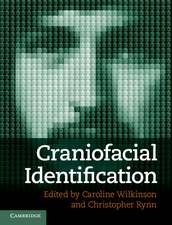Te Puna - A New Zealand Mission Station: Historical Archaeology in New Zealand: Contributions To Global Historical Archaeology
Autor Angela Middletonen Limba Engleză Paperback – 6 dec 2010
Across the globe, a common material culture travelled with its evangelizing (and later colonizing) settlers, with artefacts appearing as cultural markers from Cape Town in South Africa, to Tasmania in Australia and the even more remote Bay of Islands in New Zealand. After missionization, colonization occurred. Additionally, common themes of interaction with indigenous peoples, household economy, the development of commerce, and social and gender relations also played out in these communities.
This work is unique in that it provides the first archaeological examination of a New Zealand mission station, and as such, makes an important contribution to New Zealand historical archaeology and history. It also situates the case study in a global context, making a significant contribution to the international field of mission archaeology. It informs a wider audience about the processes of colonization and culture contact in New Zealand, along with the details of the material culture of the country’s first European settlers, providing a point of comparison with other outposts of British colonization.
| Toate formatele și edițiile | Preț | Express |
|---|---|---|
| Paperback (1) | 387.96 lei 6-8 săpt. | |
| Springer – 6 dec 2010 | 387.96 lei 6-8 săpt. | |
| Hardback (1) | 393.52 lei 6-8 săpt. | |
| Springer – 15 oct 2008 | 393.52 lei 6-8 săpt. |
Din seria Contributions To Global Historical Archaeology
- 15%
 Preț: 640.24 lei
Preț: 640.24 lei - 15%
 Preț: 642.36 lei
Preț: 642.36 lei - 15%
 Preț: 643.84 lei
Preț: 643.84 lei -
 Preț: 399.12 lei
Preț: 399.12 lei - 15%
 Preț: 639.90 lei
Preț: 639.90 lei - 15%
 Preț: 644.82 lei
Preț: 644.82 lei - 15%
 Preț: 636.80 lei
Preț: 636.80 lei - 15%
 Preț: 643.84 lei
Preț: 643.84 lei - 18%
 Preț: 949.23 lei
Preț: 949.23 lei - 15%
 Preț: 640.24 lei
Preț: 640.24 lei - 15%
 Preț: 640.06 lei
Preț: 640.06 lei - 15%
 Preț: 641.71 lei
Preț: 641.71 lei - 15%
 Preț: 646.75 lei
Preț: 646.75 lei - 15%
 Preț: 642.03 lei
Preț: 642.03 lei -
 Preț: 390.46 lei
Preț: 390.46 lei -
 Preț: 391.79 lei
Preț: 391.79 lei - 15%
 Preț: 642.51 lei
Preț: 642.51 lei - 15%
 Preț: 647.73 lei
Preț: 647.73 lei -
 Preț: 383.71 lei
Preț: 383.71 lei - 15%
 Preț: 643.99 lei
Preț: 643.99 lei - 18%
 Preț: 968.65 lei
Preț: 968.65 lei - 15%
 Preț: 639.08 lei
Preț: 639.08 lei - 15%
 Preț: 636.63 lei
Preț: 636.63 lei - 18%
 Preț: 954.93 lei
Preț: 954.93 lei -
 Preț: 384.86 lei
Preț: 384.86 lei - 15%
 Preț: 641.85 lei
Preț: 641.85 lei - 15%
 Preț: 641.53 lei
Preț: 641.53 lei - 15%
 Preț: 643.99 lei
Preț: 643.99 lei - 15%
 Preț: 645.28 lei
Preț: 645.28 lei - 18%
 Preț: 733.46 lei
Preț: 733.46 lei
Preț: 387.96 lei
Nou
Puncte Express: 582
Preț estimativ în valută:
74.26€ • 80.69$ • 62.42£
74.26€ • 80.69$ • 62.42£
Carte tipărită la comandă
Livrare economică 21 aprilie-05 mai
Preluare comenzi: 021 569.72.76
Specificații
ISBN-13: 9781441926593
ISBN-10: 1441926593
Pagini: 292
Ilustrații: XV, 276 p. 38 illus.
Dimensiuni: 155 x 235 x 20 mm
Greutate: 0.41 kg
Ediția:2008
Editura: Springer
Colecția Springer
Seria Contributions To Global Historical Archaeology
Locul publicării:New York, NY, United States
ISBN-10: 1441926593
Pagini: 292
Ilustrații: XV, 276 p. 38 illus.
Dimensiuni: 155 x 235 x 20 mm
Greutate: 0.41 kg
Ediția:2008
Editura: Springer
Colecția Springer
Seria Contributions To Global Historical Archaeology
Locul publicării:New York, NY, United States
Public țintă
GraduateCuprins
The New Zealand Mission.- Mission Station and Subsistence Farm.- The Archeological Investigations.- Domesticity and Daily Life.- Discussion and Conclusion.
Textul de pe ultima copertă
Evangelical missionary societies have been associated with the processes of colonization throughout the globe, from North America to India, Africa, and into the Pacific. In late eighteenth century Britain the Church Missionary Society for Africa and the East (CMS) began its missionary ventures, and in the early nineteenth century sent three of its members to New Zealand, then an unknown, little-explored part of the world. This book anthropologizes the processes of missionization, presenting a case study of the New Zealand CMS mission station, Te Puna, settled in 1832 following the closure of New Zealand’s first mission, established in 1814.
The historical archaeology of Te Puna demonstrates the particularities of one outpost of early nineteenth century British colonization, but its story resonates around the globe, reflecting local differences as well as common patterns in missionization. In all mission types, domesticity is revealed as a central, unifying concern of the ‘civilizing mission’; other themes of interaction with indigenous peoples, household economy, the development of commerce, and social and gender relations were played out. Across the globe, a common material culture traveled with its evangelizing (and colonizing) settlers, with artifacts appearing as cultural markers from Cape Town in South Africa, to Tasmania and Victoria in Australia, and the even more remote Bay of Islands in New Zealand.
This book brings to life the Te Puna mission: a simple, rural household, where the larger dramas of settlement, colonization, and culture contact are clearly reflected in the archaeological and archival records. At the same time, the processes of missionization within New Zealand are placed within the wider framework of evangelical efforts in other parts of the world in the early nineteenth century.
The historical archaeology of Te Puna demonstrates the particularities of one outpost of early nineteenth century British colonization, but its story resonates around the globe, reflecting local differences as well as common patterns in missionization. In all mission types, domesticity is revealed as a central, unifying concern of the ‘civilizing mission’; other themes of interaction with indigenous peoples, household economy, the development of commerce, and social and gender relations were played out. Across the globe, a common material culture traveled with its evangelizing (and colonizing) settlers, with artifacts appearing as cultural markers from Cape Town in South Africa, to Tasmania and Victoria in Australia, and the even more remote Bay of Islands in New Zealand.
This book brings to life the Te Puna mission: a simple, rural household, where the larger dramas of settlement, colonization, and culture contact are clearly reflected in the archaeological and archival records. At the same time, the processes of missionization within New Zealand are placed within the wider framework of evangelical efforts in other parts of the world in the early nineteenth century.
Caracteristici
This important topic has been little explored - addressing the role of missions in light of global processes of colonialism Middleton uses the site of Te Puna as a lens through which to view larger themes such as globalisation, culture contact, and gender and to address issues of wider significance One of the first (if not the first) historical archaeological treatments of New Zealand









